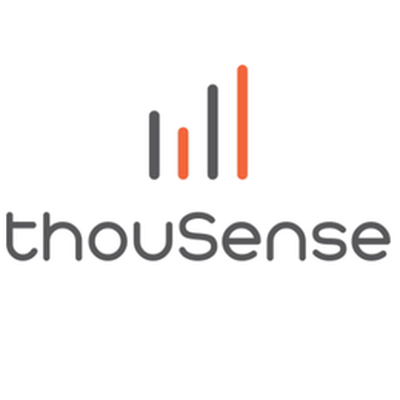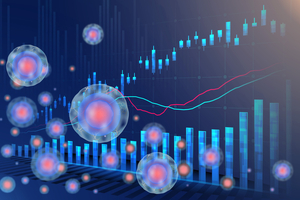How will AI help Demand Forecasting Accuracy be Enhanced?
Corps
Demand volatility in reference to market prediction is one of the main problems facing business executives today. As data is more accessible than ever, customer buying patterns are becoming more complex, making it harder to recognise or forecast them.
Demand forecasting with AI
The accuracy of demand forecasting depends on a multistep procedure that begins with a quantitative examination of historical demand to find trends and patterns that may be extrapolated into the future.
The usual forecasting software suite will apply a variety of these ways, compare the findings to recent experience, and use the method that has proven to be the most accurate. There are numerous sophisticated models and methodologies utilized in this process. These statistical projections are just the start.
The foundation of statistical forecasting is the idea that demand will be similar to demand in the past, but this is only accurate in the absence of external variables. It is crucial to try and detect those external influences and foresee their impact on the established demands of the customers because any new effect is not represented in prior outcomes. A lot of data, human logic, and intuition are used in this second forecasting step, making it a rich field for AI in demand forecasting.
Teaching machines to mimic human thought processes is the foundation of artificial intelligence. Although no one expects computers to truly think like people in the near future, some human-like logic is achievable, and machine learning allows it to continuously get better by building on previous successes.
AI demand forecast for more accurate predictions
AI should be more perceptive and better equipped to cope with new information and developing changes.
How does that affect the accuracy of demand forecasting? It makes it possible to obtain external data, such as demographics, economic statistics, so-called leading indicators relevant to the company's markets, known or predicted competitive moves, such as price reductions or promotions, and similar things. As it learns what performs and what doesn't, the AI system can initially apply these parameters as directed by the customers, measure the outcomes, and gradually enhance the process.
Of course, humans could also perform this task, but machine learning and artificial intelligence should be capable of processing much more data, test much more scenarios, and perform analysis that is more sophisticated by testing hundreds of scenarios and models and being more accurate in its analysis and process refinement. It is likely that AI for market research would boost the precision of demand predictions by being more reactive to and better capable of reacting to incoming knowledge and emergent changes, such as the launch of new products, supply chain interruptions, or unexpected changes in demand.
Demand forecasting with AI
Demand forecasting powered by artificial intelligence offers a remedy for the irregular nature of demand. Demand forecasting, which is a type of predictive analytics, traditionally analyzes the procedure of estimating client demand using historical data. Machine learning algorithms can be used by businesses to as correctly estimate shifts in consumer demand as feasible. These algorithms are capable of automatically recognising patterns, locating intricate links in big datasets, and picking up indications for changing demand.
This kind of AI is typically used by businesses to avoid operational process errors brought on by a mismatch between supply and demand. This is unlikely to be entirely correct, to be honest. However, it can give businesses the chance to drastically cut supply chain expenses while also enhancing financial planning, personnel planning, profit margins, and risk assessment judgments.
Limitations in forecasting are overcome through machine learning and artificial intelligence
- In logistics, AI is rapidly gaining ground, particularly for demand forecasting. When used properly, AI reduces erratic inventory purchases, overstocks (and the ensuing markdowns), out-of-stocks, margin erosion, and for the optimization of new waste.
- Machine learning is a component of AI-based demand forecasting systems, and they are predicated on the premise that when we give computers data, they can learn on their own. This has implications for forecasting since it allows machine learning algorithms to automatically identify patterns and relationships in massive data sets that would be difficult or time-consuming for people to identify. Machine learning models are automated, allowing them to examine all data, not just a subset of it, at scale. By analyzing data that receives little to no human attention, they can uncover a tremendous amount of economic value. Additionally, since the data is routinely cleaned, the "garbage in, garbage out" forecasting issues caused by soiled or incomplete data are avoided.
- In conventional demand forecasting models, data is sent into a computer, which then analyzes it and produces a result by applying the data to a static, predetermined set of criteria. However, with machine learning, the computer becomes adaptable, dynamically responding to data changes and changing the projections in line with them. This significantly increases accuracy and makes it possible for businesses to respond to demand more quickly over time.
- The current methods, where people attempt to aggregate and define seasonal trends, are a significant departure from AI-based forecasting systems. These systems frequently produce unsatisfactory findings that result in out-of-stocks, lost sales, and markdowns. Traditional systems make it difficult to forecast at the store level, especially for merchants who must deal with millions of potential store combinations.
Demand forecasting uses machine learning to overcome the constraints of statistical, static prediction
1. Algorithms that use machine learning can access all of the past data and have a far deeper understanding of both normal sales patterns and abnormalities.2. Machine learning takes into account the present, past, and future. As it develops over time, increasing forecast accuracy, it recognises past errors that ought to have anticipated and reacts more quickly.
3. 50% of retail distribution network executives currently claim to spend too much time processing data. By eliminating the need for humans to interact with the data, machine learning and artificial intelligence solutions significantly increase speed, accuracy, and efficiency.
4. In order to comprehend external consequences, evaluate their relevance, and uncover patterns that humans are unable to recognise, machine learning automatically incorporates new inputs and external information. These include variables like weather information, contextual information like a government food calendar for the United States or European Union school breaks, as well as commercial statistics, local demographics, and events.
5. Poor inventory management has a significant impact on logistics, and as merchants adapt to consumer demand through many channels, forecasting, orders, channel allocation, and logistics become more complex. AI can examine various demand scenarios and patterns to provide a complete picture of the supply chain, which is a crucial step toward timely logistics and replenishment.
Data is made competitively advantageous via AI
The future norm for estimating retail demand will increasingly be AI-based predicting with machine learning. Retailers won't need to hire more data scientists, a limited resource, thanks to AI-based solutions. Instead, the system provides new levels of data, warnings, and insights for your data, acting as an autonomous data scientist.
Additionally, AI isn't just for the biggest retailers. Retailers of all sizes can now use AI to their advantage and free up existing supply chain managers to focus on more strategic tasks thanks to the development of innovative Software as a Service (SaaS) solutions.
Due to improved projections, AI also helps merchants to have more profitable push-based restocking as well as more precise, automated pull-based replenishment. Supply chain managers can adapt to rapid changes in demand because of the algorithms' ongoing learning and ability to provide real-time views as well as weekly and intraday projections.
In the end, AI-based demand forecasting drives total shopper happiness by fostering happy, devoted customers who keep coming back because of more relevant combinations and new products. Retailers might not always see the benefits of having excellent market research, sales forecasting, and policies for shipments and refunds, according to Gartner. Machine learning and artificial intelligence are necessary to make this a reality.










commentaires